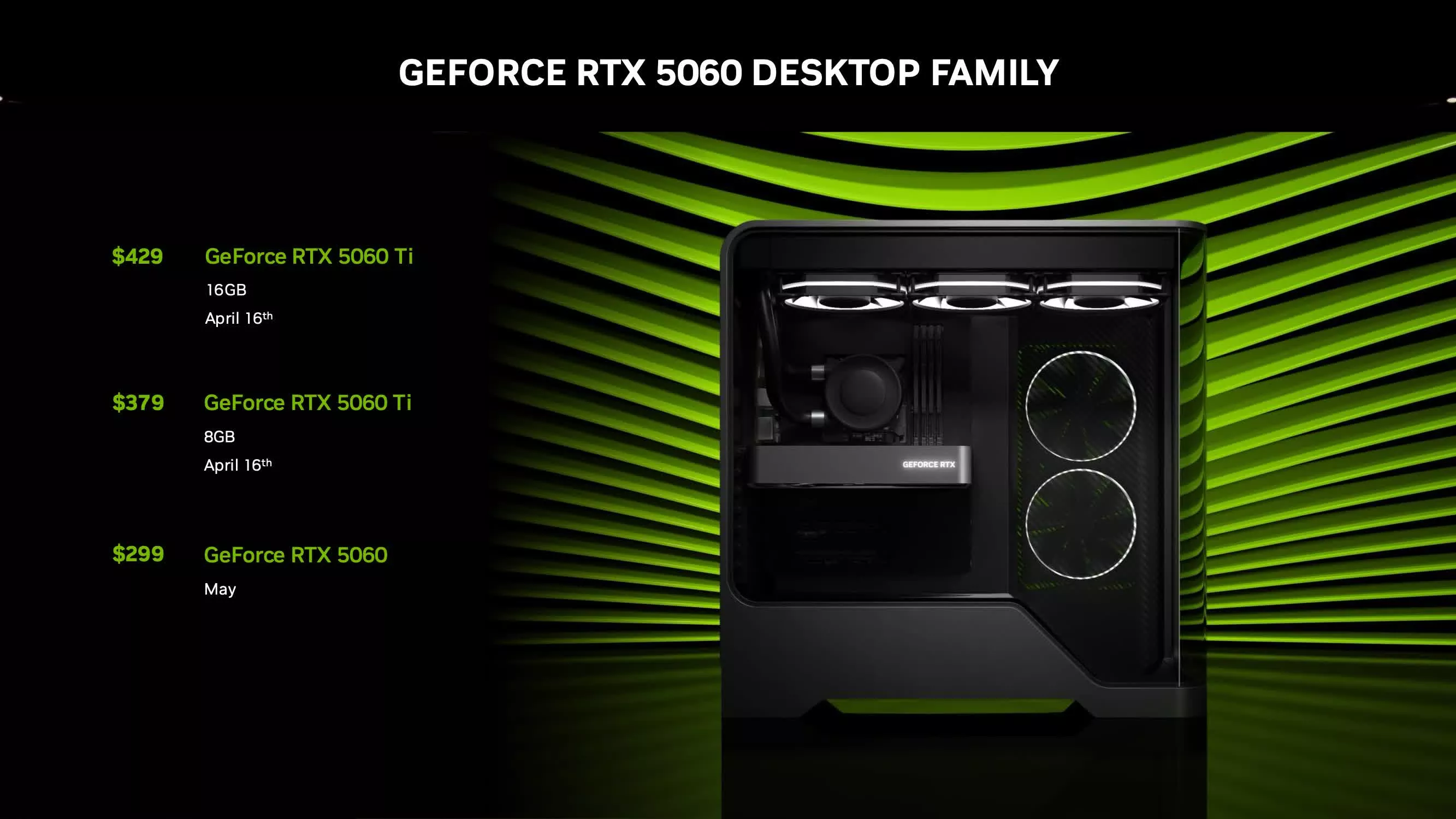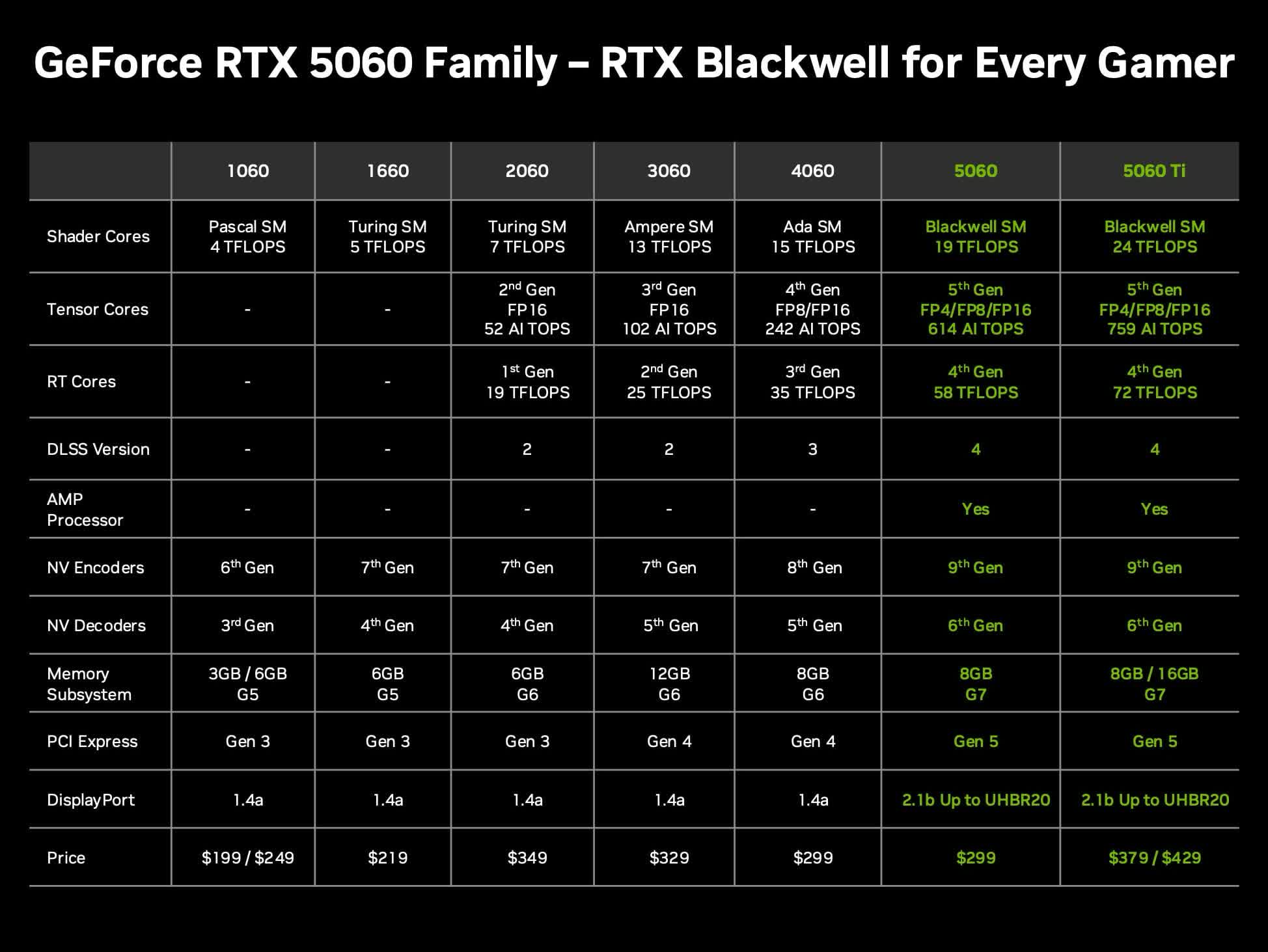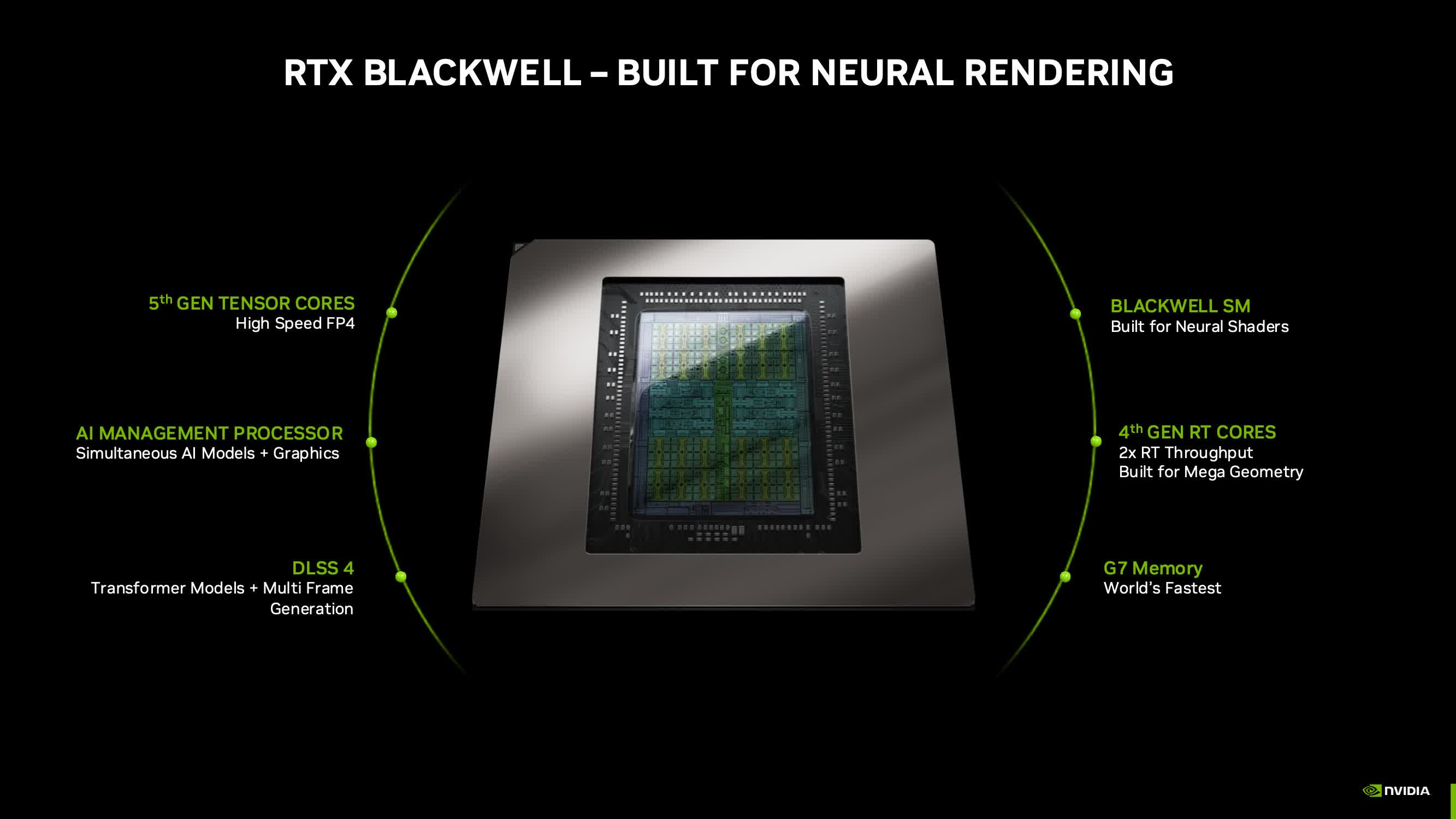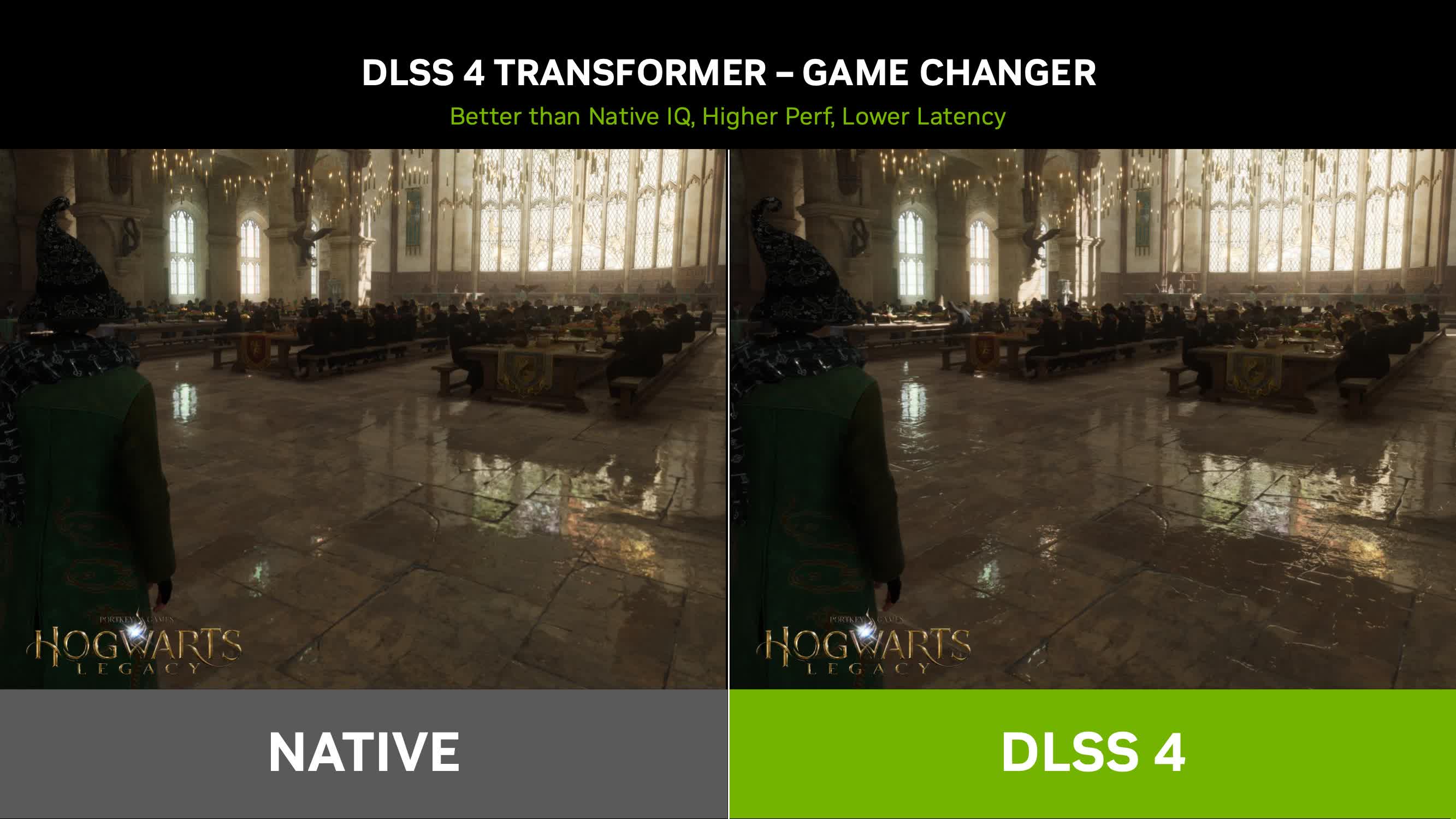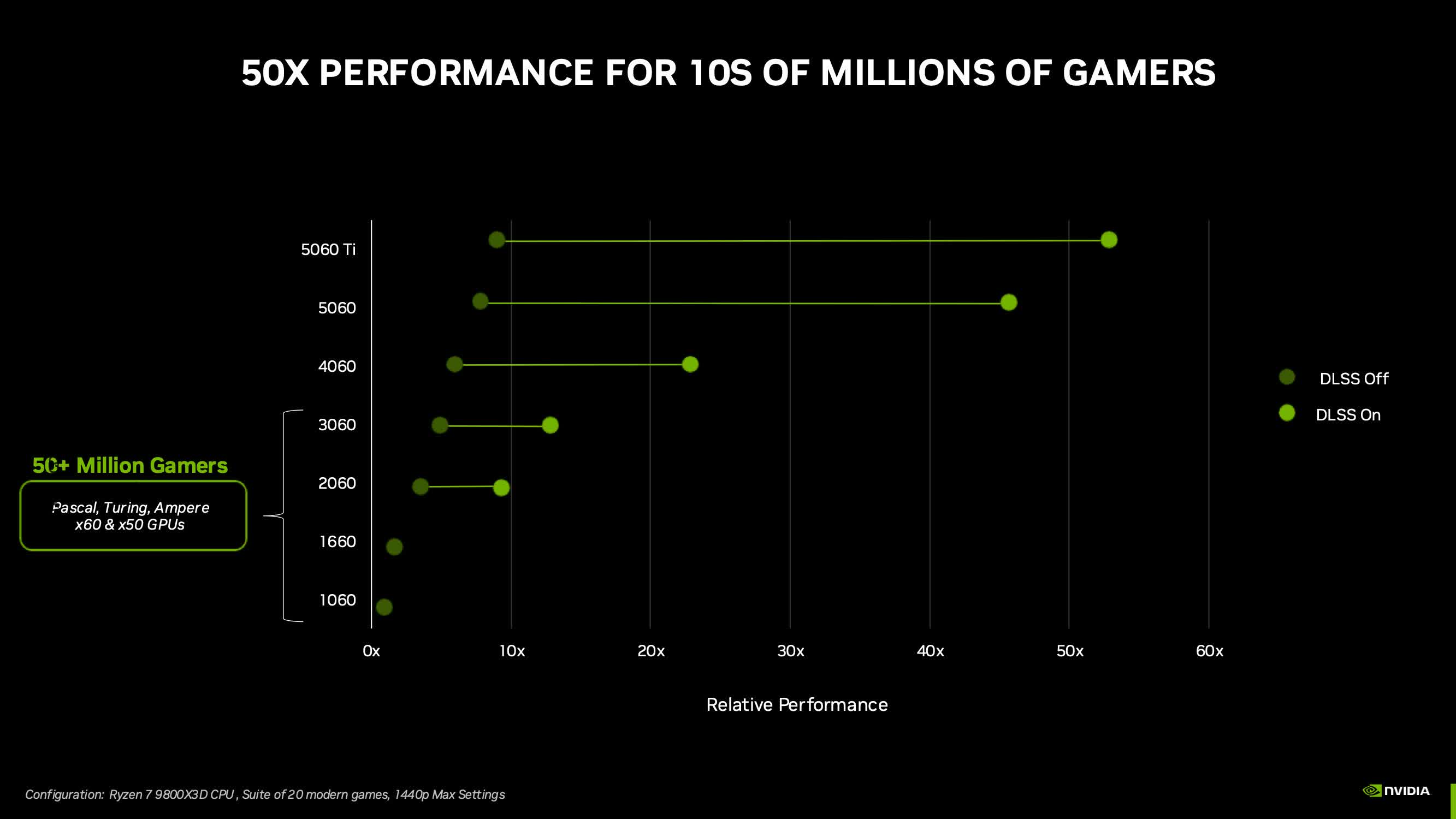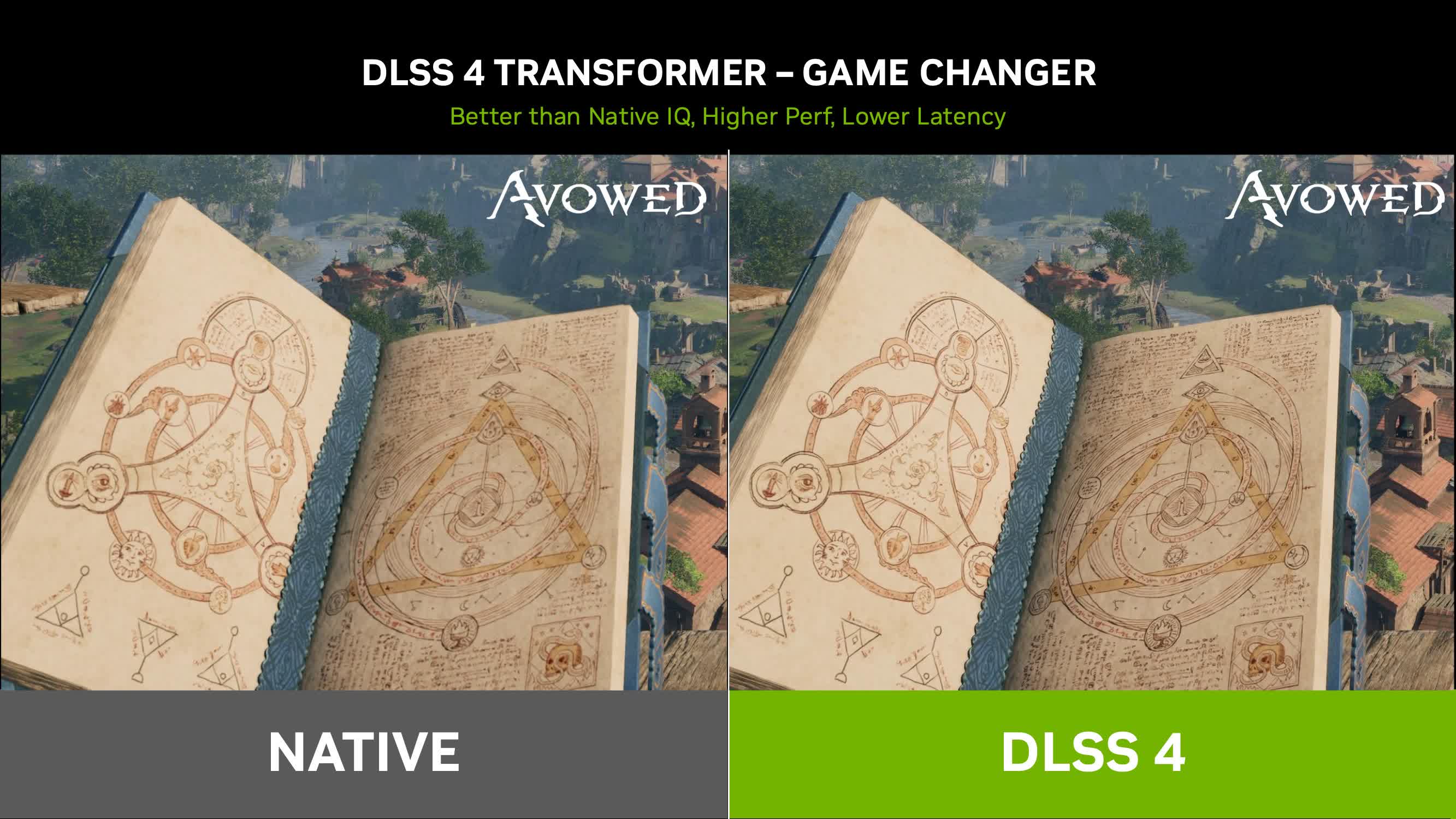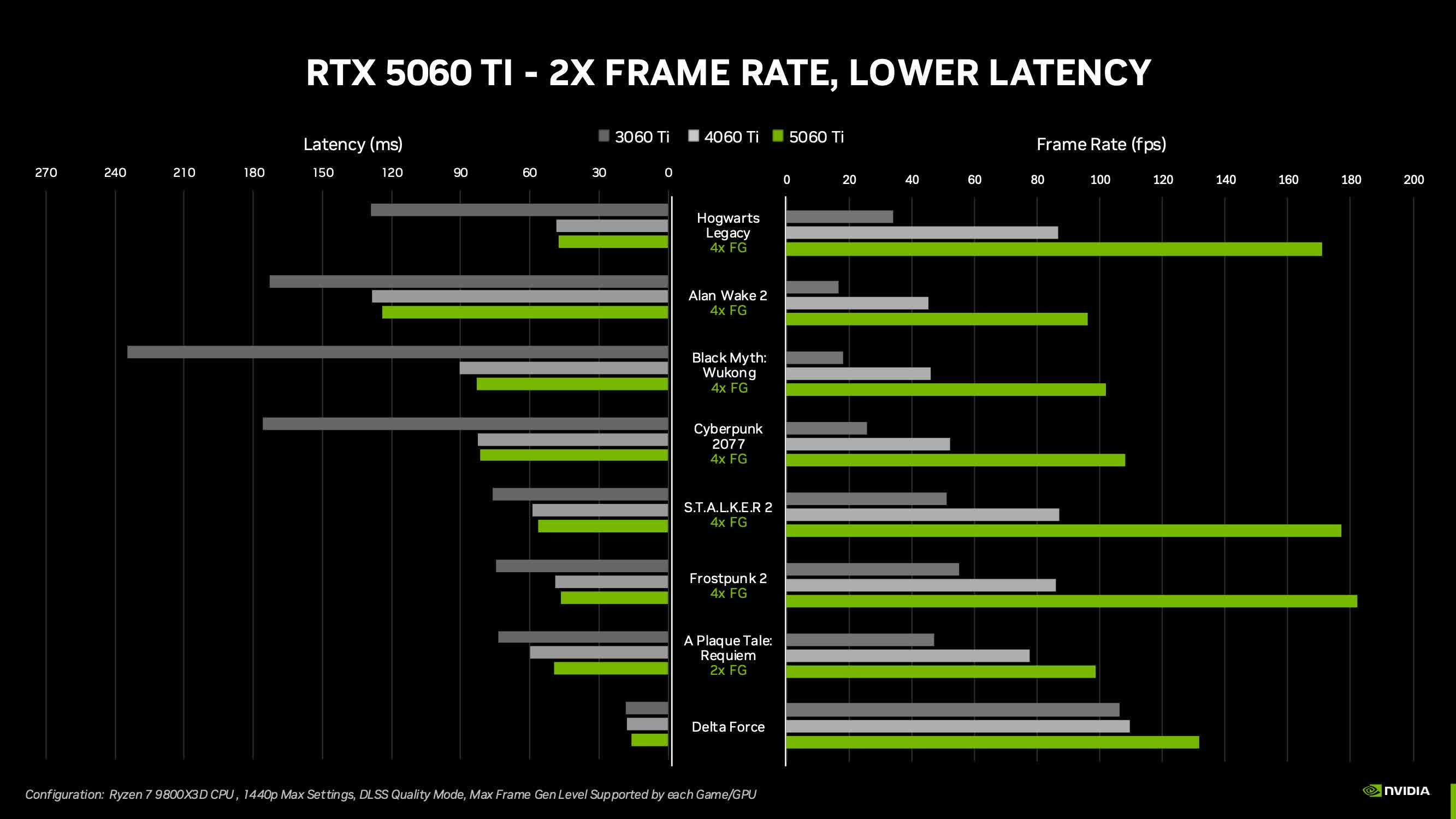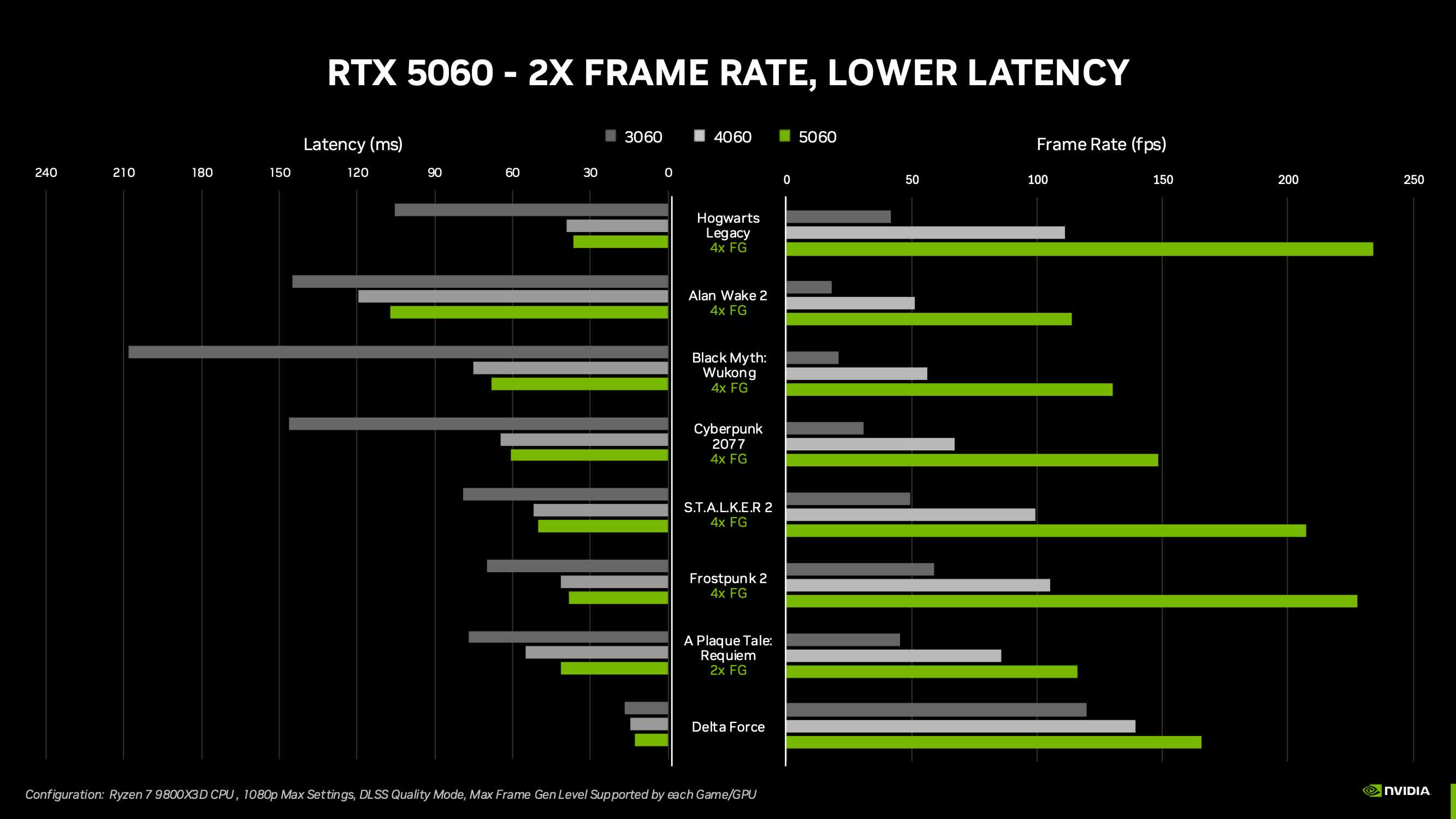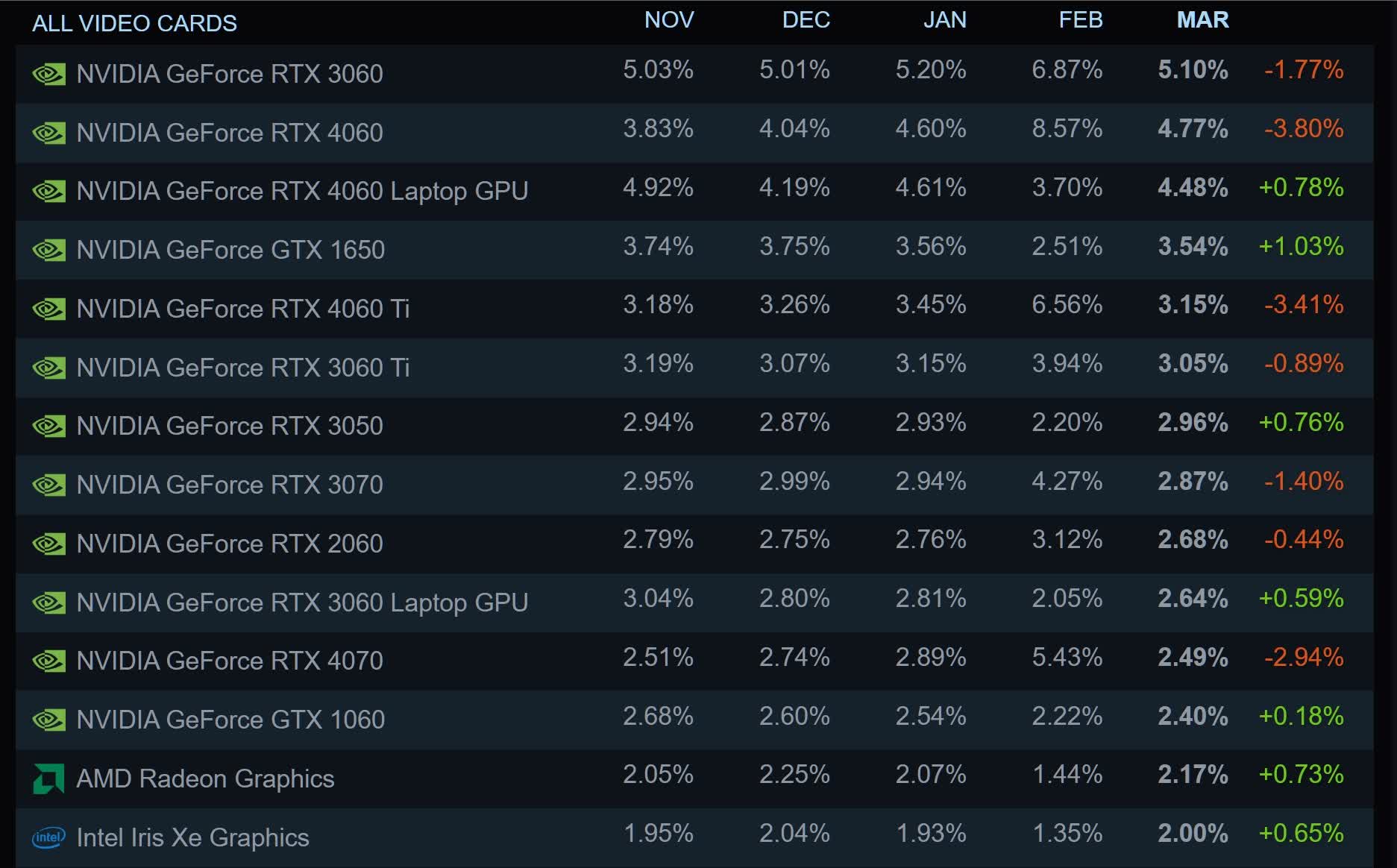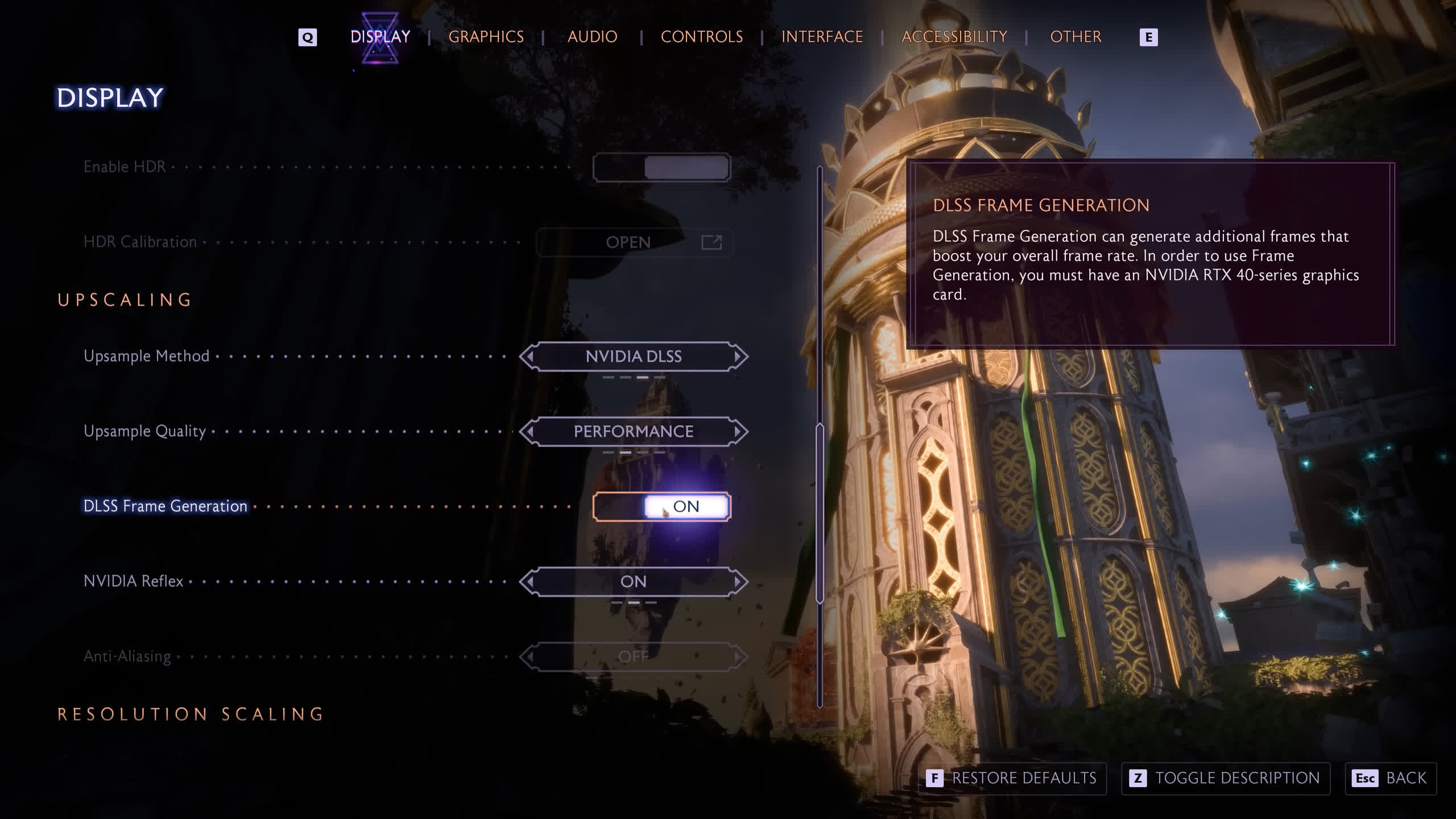What just happened? Nvidia is finally ready to unveil the GeForce RTX 5060 series today, which includes three new graphics cards: the RTX 5060 Ti 16GB, the RTX 5060 Ti 8GB, and the RTX 5060. Nvidia seems to be trying to bury the 8GB models, and there are quite a few questionable decisions surrounding this launch. Safe to say, we were unimpressed – and maybe a little confused – by what Nvidia presented to us.
RTX 5060 series: specs, pricing, and availability
To start with, let's focus on the graphics cards and what they offer. The RTX 5060 Ti, in both memory configurations, will be available on April 16th – so that's tomorrow – priced at $430 for the 16GB model and $380 for the 8GB model. The RTX 5060, which also comes with 8GB of memory, will be available at some point in May for $300.
Of course, there's currently a lot of pricing volatility for GPUs and even more so in the United States when it comes to consumer electronics manufactured abroad, primarily due to tariffs.
Nvidia confirmed that these are pre-tariff "global" prices, so if tariffs or other taxes apply in your region – including the United States – they will be added to the listed prices. Excluding those additional costs, you should expect a rough conversion from these global prices into your local currency, consistent with the rest of the RTX 50 series lineup.
Our review is now live: Nvidia RTX 5060 Ti 16GB Review – Not Great, Not Terrible
For instance, the RTX 5060 Ti 16GB is 22% cheaper than the RTX 5070, so in your region, it should be priced roughly 22% below whatever the 5070 MSRP is.
Nvidia didn't provide an expected final retail price for the RTX 5060 series in the US because they're unsure what the exact tariffs will be on launch day – and fair enough, since those rates seem to change almost daily. That said, the real prices are likely to be significantly higher, depending on where the cards are manufactured – whether that's China, Taiwan, Vietnam, or elsewhere.
These new graphics cards are based on Nvidia's GB206 die. Both RTX 5060 Ti configurations use the same core, with the only difference being memory capacity. There are 4,608 CUDA cores – up 6% from the 4,352 cores in the RTX 4060 Ti – with a boost clock of 2.57 GHz. They feature a 128-bit memory bus utilizing 28 Gbps GDDR7 memory, which should deliver 448 GB/s of bandwidth, regardless of whether you choose the 16GB or 8GB version.
Nvidia didn't confirm this directly, but we expect a PCIe 5.0 x8 interface. They did, however, confirm full DisplayPort 2.1b UHBR20 support.
The RTX 5060 is a cut-down version, which we believe includes 3,840 CUDA cores. The memory subsystem is the same as the Ti model: a 128-bit bus, 28 Gbps GDDR7, and 8GB of capacity. Nvidia claims the 5060 delivers 80% of the performance of the 5060 Ti, at around 80% of the price – when comparing the 8GB models.
8GB models under scrutiny: poor value and questionable decisions
Now, if you've been following our GPU reviews for a while, you're probably familiar with our opinion on 8GB graphics cards at present – an opinion shared by many other reviewers. We won't dwell on this for too long, so we'll just say it plainly: paying $380 for an 8GB GPU in 2025 is a terrible idea.
Even $300 for the 8GB RTX 5060 feels like a sick joke – this card simply needs more VRAM at that price point. We strongly believe the price ceiling for 8GB GPUs this generation should be $200, so Nvidia is well above that with the 5060 Ti 8GB – and real-world prices are likely to be even worse.
There is one small silver lining: the RTX 5060 Ti 16GB is launching at $430, just $50 more than the 8GB version and lower than the $500 MSRP we saw for the 4060 Ti 16GB at launch (though that card quickly dropped to $450). Thankfully, we're not seeing a ridiculous $100 premium for 16GB this time.
In practical terms, both Ti models are $20 cheaper than their predecessors, and $430 is the lowest price Nvidia has ever offered for a 16GB GPU. That raises the obvious question – why does the 5060 Ti 8GB even exist? It seems like a redundant, poor-value product. And of course, the 5060 should have launched with more memory at the same price.
We asked why the 5060 wasn't equipped with 12GB of VRAM using 3GB GDDR7 modules. The answer we received was that those modules are rare and expensive, making them impractical for this card. But to us, that sounds more like an excuse. Nvidia needed to find a solution to increase the VRAM, whether that meant accepting lower margins with 3GB modules or simply doubling the capacity to 16GB. It's not our problem – or gamers' problem – that Nvidia designed this GPU with an inadequate 128-bit memory bus, which limited memory configurations. That's entirely on Nvidia.
As for performance, Nvidia claims the RTX 5060 Ti delivers 20% more performance than the RTX 4060 Ti, excluding frame generation and similar features. So, apples to apples, it's about 20% faster. Of course, the usual "2x performance" marketing slides are still floating around, but at least we were given a more realistic number to work with.
This should place the 5060 Ti just below the RTX 4070 in terms of performance – at least for the 16GB model. The 8GB version will likely be constrained in many titles. Using this as a baseline for value, the 5060 Ti 16GB at $430 should offer roughly 15 – 20% lower cost per frame than the 4070 and similar value to the RTX 5070.
We'll see if that holds up in reviews. Some RTX 50 series models have underdelivered compared to Nvidia's claims, so we're hoping that's not the case here. The pricing and positioning clearly indicate that the 16GB card is the real focus – not the 8GB variant.
For the RTX 5060, Nvidia claims a 20 – 25% performance uplift over the RTX 4060 at the same price. But again, VRAM limitations are a concern. At least from a performance standpoint, it's encouraging to see improvement over the previous generation, rather than stagnation. The RTX 4060 was quite similar to the 3060 in performance, but the 5060 seems to be genuinely faster. Unfortunately, that progress is undercut by the regression in VRAM, which could become a serious issue as higher resolutions and quality settings become more common.
That said, we wouldn't describe these gains as groundbreaking over the RTX 30 series. The RTX 5060 Ti 16GB should be about 30% faster than the RTX 3060 Ti, while also offering double the VRAM.
In pure dollar terms, it costs $30 more at launch, but adjusted for inflation, it's around $60 cheaper. That translates to a 33% reduction in cost per frame after four and a half years – a similar improvement to what the 3060 Ti delivered over the RTX 2060 and 2060 Super, despite those cards being released less than two years apart. Clearly, progress has slowed over the past two generations.
We also expect the RTX 5060 to be around 30% faster than the RTX 3060, while carrying an inflation-adjusted $100 lower price. This could equate to over 40% better cost per frame. However, that value is significantly undermined by the drop from 12GB to 8GB of VRAM.
This card would be far more compelling if the opposite had occurred – if it featured 16GB instead. At that point, offering 40% better cost per frame with more VRAM would be a slam dunk. But as it stands, it's much harder to see the 5060 8GB delivering that level of success.
Beyond the pricing, specifications, and performance claims, this is one of the most bizarre GPU launches we've seen from Nvidia. The messaging is confusing, there's an obvious attempt to downplay certain models, and our briefing with Nvidia included some truly baffling slides and statements – enough to leave both Steve and us scratching our heads.
Launch confusion and mixed messaging from Nvidia
To start with, the RTX 5060 Ti 16GB and 8GB models are both officially launching on April 16th – but also, possibly not on the same day. Nvidia told us the 8GB card is arriving "slightly later," perhaps a week or so after the 16GB model, which would technically make it a different launch day. Yet, they're still claiming both share the same release date. It's hard to know what's actually going on.
While both variants are said to launch the same day, Nvidia is only sampling the 16GB model for review coverage, and that's what reviewers will be covering on day one. But it doesn't stop there. We were told that AIBs (add-in board partners) will not be supplying the 8GB card for reviews – and in fact, cannot supply it. Even though Nvidia gave us permission to source 8GB models for launch day testing, board partners told us they were unable to send them. In some cases, this was because the cards weren't ready, but in others, it was because Nvidia had explicitly blocked them from doing so.
When we asked Nvidia whether they were prioritizing the 16GB model over the 8GB model, the initial response was "no." But later in our briefing, they admitted that, yes, they are prioritizing the 16GB model. The mixed messaging here is just bizarre.
Claiming both models launch the same day while only making the 16GB version reviewable is a bad move for casual GeForce buyers. The two models have nearly identical names, and the 8GB card will be the cheaper option on store shelves. So, buyers unfamiliar with the VRAM differences may naturally gravitate toward the more affordable option. Meanwhile, all the day-one reviews, impressions, and potential hype will be based on the 16GB card, which doesn't suffer from the same memory limitations. This feels like an attempt to skew launch reception toward the better product, while quietly slipping out a weaker model that benefits from the positive coverage – ultimately selling it to unaware customers.
Even worse is how Nvidia is handling the RTX 5060. This card is slated for release in May, but no specific date has been given. And – would you believe it – the review embargo for this GPU also lifts on April 16th, alongside the 5060 Ti. That means no formal launch date, no day-one coverage, no sampling program. It's a free-for-all.
In most cases, cards will appear on store shelves before anyone has critically evaluated them or given buyers a clear sense of what to expect – completely opposite of how GPU launches are usually handled, where reviews either precede or coincide with release.
Nvidia insisted that this approach doesn't amount to "burying" the RTX 5060. But from our perspective, it certainly looks like they're trying to bury it. If we wanted to prevent critical evaluations of this GPU, we would do exactly what Nvidia is doing: release the card randomly with no early samples and no structured coverage.
The result is that some customers will buy it without seeing any reviews, and reviewers who rely on sampling – and can't justify purchasing the card themselves – won't cover it at all. Others will cover it later, reducing the overall visibility. Compared to a fully supported launch like the RTX 5090, this strategy minimizes review coverage for the 5060.
Of course, reviewers aren't entitled to free samples. But it's a terrible look when Nvidia is willing to provide cards like the RTX 5070 and 5080 weeks before launch – ensuring reviews drop just before release – while the RTX 5060 is silently pushed into the market without review support.
The contrast is stark. It gives the impression that Nvidia wants to bury or downplay the 5060, much like they did with the RTX 3050 6GB. Still, we're curious to hear your thoughts – feel free to let us know in the comments.
Nvidia provided some rather laughable reasons for this approach. One explanation was that they're launching too many products at once and can't focus on the RTX 5060. That doesn't hold up. They managed to launch the RTX 5090, 5080, and 5070 Ti within three weeks – all with full review programs.
So we're not buying that excuse. Especially considering that the RTX 60-class GPU is historically one of the most popular and mainstream cards they offer, it should be a major priority in any well-balanced product lineup.
Nvidia also claimed that the RTX 5060 isn't aimed at enthusiasts who read reviews at TechSpot or YouTube channels like Hardware Unboxed, so launch-day reviews are less important. This is not only inaccurate – it's also a weak excuse.
Our audience isn't just wealthy gamers buying RTX 5090s. Plenty of people who check out our reviews are mainstream gamers purchasing mid-range graphics cards. Our reviews of previous entry-level and mainstream GPUs have consistently been very popular. So the idea that a $300 GPU isn't for PC enthusiasts is ridiculous.
Steam Hardware Survey (March 2025) - GPU Market Share Trends
You could maybe make that argument for ultra-budget $150 cards – but not for what is historically the most popular GPU tier in Nvidia's lineup each generation – just look at the Steam survey and you can easily conclude it's all unnecessary excuses.
Surely Nvidia didn't expect us to accept this reasoning, especially when, in the same briefing, they also claimed that "gamers love the 60 series." So which is it? Gamers love it, but enthusiast gamers don't care about mainstream GPU reviews? The messaging was completely contradictory. Honestly, we were losing our minds in that briefing listening to these excuses.
Our take – both Steve's and mine after discussing it – is pretty simple. Nvidia likely anticipates that the RTX 5060 Ti 8GB and RTX 5060 8GB will be destroyed in reviews because they have insufficient VRAM.
It's a hot topic right now, with many reviewers highlighting how 8GB just isn't enough for modern gaming. So instead of facing widespread negative reception for their new 60-class cards, Nvidia appears to be trying to limit the damage by putting the spotlight on the 5060 Ti 16GB and leaving the 8GB models to quietly launch with lesser coverage – only being reviewed by those who are willing to buy them after they hit store shelves. This strongly appears to be an attempt to bury the 8GB models, despite Nvidia's claims to the contrary.
Ultimately, it doesn't seem like Nvidia has confidence in the 8GB cards as products worth buying. Their actions clearly suggest a lack of belief in these models and a concern that they won't be well received. Companies that are proud of their products promote them and highlight their strengths. Nvidia is doing the opposite.
Marketing spin vs. reality: performance claims and VRAM concerns
And speaking of highlighting strengths, Nvidia is still marketing these cards as delivering "2X" the frame rate of previous models. They've slightly changed the phrasing to focus more on "frame rate" than "performance," similar to the RTX 5070 messaging.
They showcased examples like Black Myth: Wukong running at 102 FPS and Cyberpunk 2077 at 108 FPS – with multi-frame generation enabled. The problem, of course, is that in both examples the base render rate is below 30 FPS, resulting in high latency and a genuinely terrible experience, despite the output frame rate being over 100 FPS.
Seriously, what are we doing here guys? Nvidia needs to take a step back and reconsider how far they're pushing this "2X frame rate" narrative when marketing new products. That messaging might have worked a few years ago, but gamers aren't buying it anymore.
These are exactly the kinds of examples that get criticized – or even mocked – by the community. Believing this is a good experience is full-on Kool-Aid territory. We've moved so far from reasonable configurations that it feels like we've crossed into absurdity. Nvidia really needs to look at this from the outside and ask themselves whether these claims are helping or hurting the GeForce brand.
And with that, there's not much to add about the RTX 5060 series, but let's wait and see what the upcoming reviews reveal about where everything really stands.
Nvidia launches GeForce RTX 5060 series with three new GPUs, tries to hide the 8GB versions
